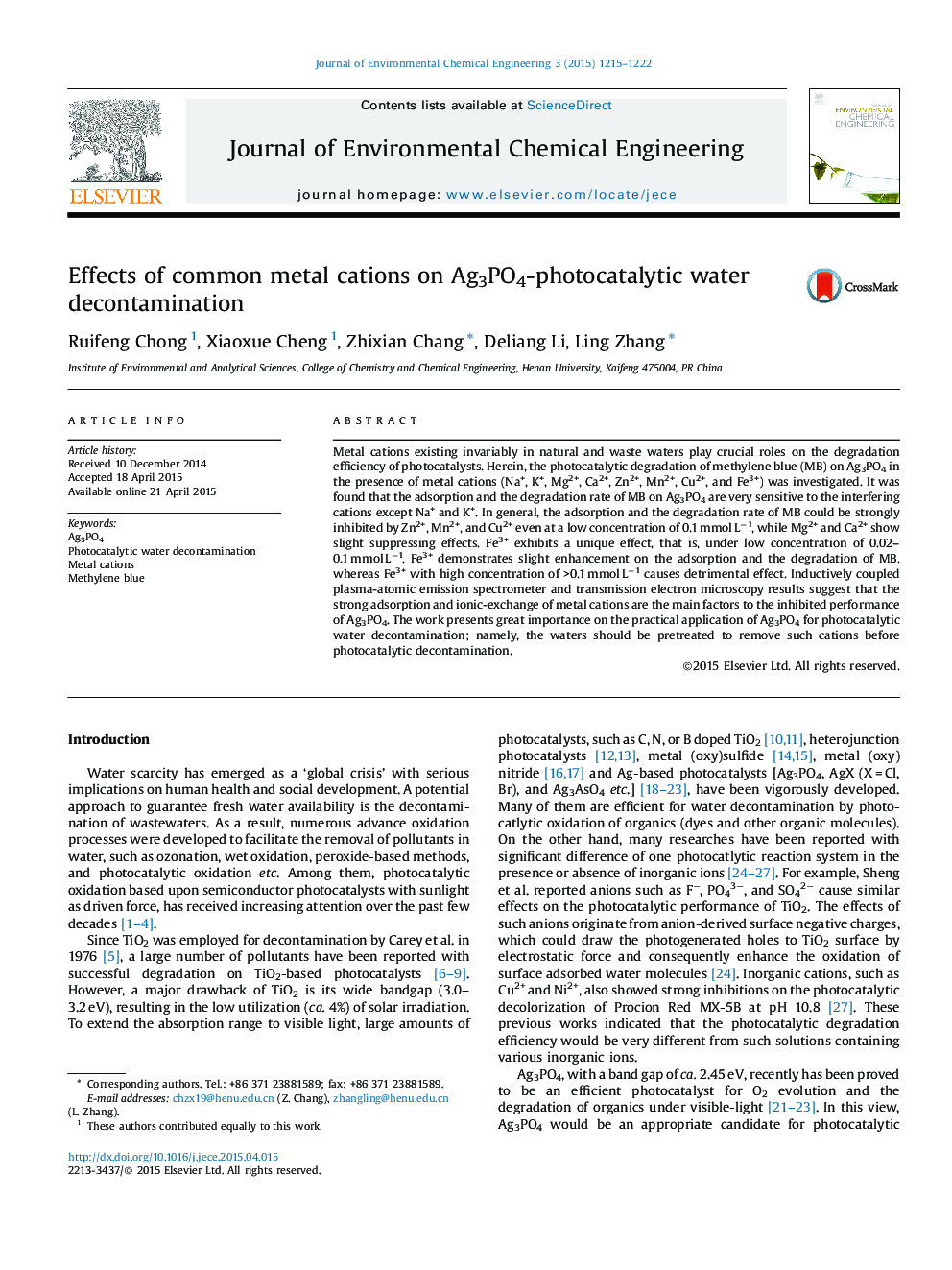| Article ID | Journal | Published Year | Pages | File Type |
|---|---|---|---|---|
| 222350 | Journal of Environmental Chemical Engineering | 2015 | 8 Pages |
•Ag3PO4-photocatalytic degradation of MB is highly affected by metal cations.•The concentrations of metal cations strongly affect the adsorption and degradation.•Deactivation of Ag3PO4 is related to the adsorption and ion-exchange of metal cations.•The practical photocatalytic decontamination with Ag3PO4 needs prevent cations from waters.
Metal cations existing invariably in natural and waste waters play crucial roles on the degradation efficiency of photocatalysts. Herein, the photocatalytic degradation of methylene blue (MB) on Ag3PO4 in the presence of metal cations (Na+, K+, Mg2+, Ca2+, Zn2+, Mn2+, Cu2+, and Fe3+) was investigated. It was found that the adsorption and the degradation rate of MB on Ag3PO4 are very sensitive to the interfering cations except Na+ and K+. In general, the adsorption and the degradation rate of MB could be strongly inhibited by Zn2+, Mn2+, and Cu2+ even at a low concentration of 0.1 mmol L−1, while Mg2+ and Ca2+ show slight suppressing effects. Fe3+ exhibits a unique effect, that is, under low concentration of 0.02–0.1 mmol L−1, Fe3+ demonstrates slight enhancement on the adsorption and the degradation of MB, whereas Fe3+ with high concentration of >0.1 mmol L−1 causes detrimental effect. Inductively coupled plasma-atomic emission spectrometer and transmission electron microscopy results suggest that the strong adsorption and ionic-exchange of metal cations are the main factors to the inhibited performance of Ag3PO4. The work presents great importance on the practical application of Ag3PO4 for photocatalytic water decontamination; namely, the waters should be pretreated to remove such cations before photocatalytic decontamination.
Graphical abstractFigure optionsDownload full-size imageDownload as PowerPoint slide
